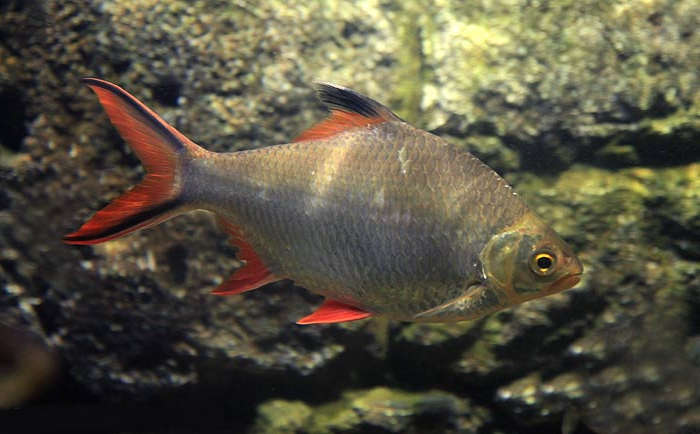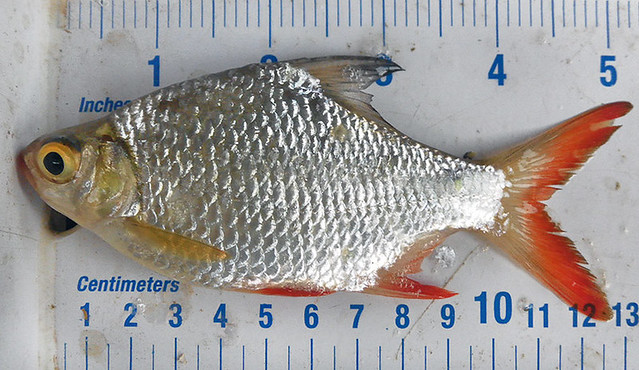The tinfoil barb (Barbonymus schwanenfeldii) is a freshwater fish species that belongs to the family Cyprinidae. Also known as the silver barb or silver shark, this fish is native to Southeast Asia, particularly in the Mekong basin and the Chao Phraya River in Thailand.
Tinfoil barbs are easily identifiable by their distinctive silver color and elongated, torpedo-shaped body. They can grow up to 14 inches in length and weigh up to 3 pounds, making them one of the largest species of barbs. Juvenile tinfoil barbs have a black stripe that runs along their body, which disappears as they grow older.
Tinfoil barbs are popular aquarium fish due to their stunning appearance and active behavior. However, they require a large tank with ample space to swim and thrive. They are known to be schooling fish, so keeping them in groups of five or more is recommended. Tinfoil barbs are not picky eaters and will readily accept most types of food, including flakes, pellets, frozen or live foods.
In the wild, tinfoil barbs are omnivores and feed on a variety of small aquatic animals and plant matter. They are also important in the aquaculture industry as a food fish, with many commercial fisheries breeding and rearing them for the market.
One interesting behavior of tinfoil barbs is their tendency to jump out of the water. This behavior is believed to be a defense mechanism against predators, and can sometimes result in injury or death if the fish jumps out of its tank.
Tinfoil barbs are relatively hardy fish, but they are susceptible to a few diseases, including ich, fin rot, and bacterial infections. Maintaining good water quality and providing a balanced diet can help prevent these issues. It’s important to note that tinfoil barbs can be aggressive towards other fish, especially those that are smaller in size, so choosing tank mates carefully is essential.
In conclusion, the tinfoil barb is a stunning and active fish species that is well-suited for large aquariums. With proper care and attention, they can provide years of enjoyment for fishkeeping enthusiasts. However, it’s important to remember that they require a significant amount of space and should only be kept with compatible tank mates.








![]()
